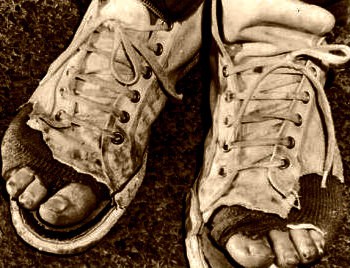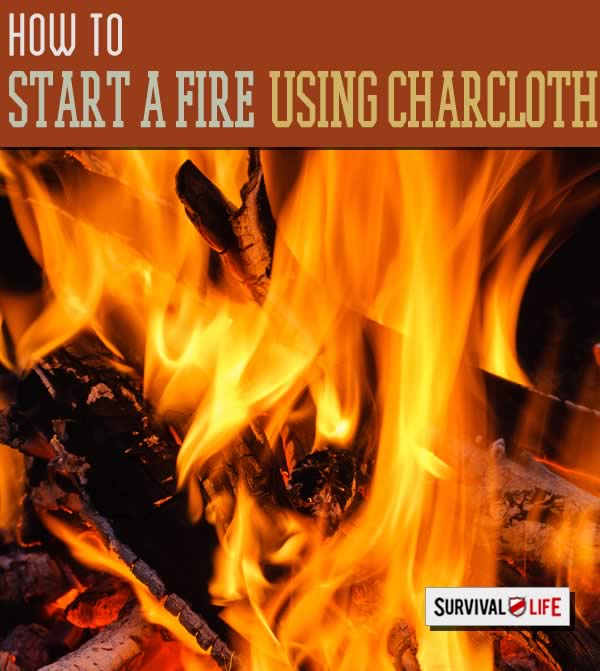Featured Articles
Walking A Mile Too Many

I am a very picky person about my shoes, even more than my wife.
When I find a pair of shoes that I like I wear them until there is nothing left of the sole.
I am finally coming to realize that I am waiting way too long on replacing my shoes.
The reality of the matter is, when I replace my shoes before they fall apart my back problems and tired feet just went away.
Did you know that as a general rule, most running and walking shoes last up to 500 miles. Lets take a closer look at this:
Based on several different studies I have found the average American walks roughly 4000-6000 steps per day and has an average stride length of 2.5 feet
If you are a completely sedentary person and spend the majority of your day at a desk your total steps per day may be closer to 2000
This means that you walk roughly 1.4-2.8 miles per day.
Keep in mind that this is normal day-to-day activity and does not include any additional exercise.
At this rate a pair of shoes should last you somewhere in the neighborhood of 312 days.
How and where you use your shoes could seriously alter that number.
For example, pavement is much harder on your shoes than a rubberized track, a dirt trail, or gravel.
Also keep in mind that shoes with an EVA midsole tend to wear down faster than shoes with a midsole made of polyurethane.
More Than A Guessing Game
If you are waiting until you walk right out of them before you decide it’s time to replace your shoes… you are waiting entirely too long.
Your feet are the only things that keep you moving and they need to be kept in top shape and protected at all costs.
That old pair of boots may be comfortable and “broken in” but waiting too long to replace your shoes you could end up doing more harm than good.
Below are three guides that will help you to determine when its time to toss your old sneakers to and pick up a new pair.
The Press Test:
To determine if the midsoles of your shoes are compressed and are not doing their job by providing a proper cushion and shock absorption, do the press test.
Using your thumb, push on the outsole upward into the midsole. With new shoes, it should be easy to see the midsole compress into lines or wrinkles. As the shoe wears down, the midsole compresses less with the same amount of pressure. When the midsole shows heavy compression lines and the press test reveals a minimal amount of compression, there is little or no cushioning left and it is time to replace them.
When Looks Matter:
Don’t worry about how dirty they are. Being dirty just means that they are well used, and that’s a good thing. What you need to be concerned with first and foremost is general wear and tear.
Take a look at your shoes. Are the heels stretched out? Are places on the outsoles worn down?
Can you see how the shoes have molded to your foot? Is the leather rubbed through or torn?
These are all signs of excessive wear.
If Your Dogs are Barking, You Should Listen:
Your body will know when there is little or no cushioning left in your shoes and it will be sure to tell you.
If you notice any aches or pains in your feet, legs, knees, hips or back after you’ve worn your shoes, it’s a good sign that you need a new pair.
Other signs include friction or blisters in unexpected places, which means your shoes have stretched and your feet are moving around too much inside the shoes.
Get the Most Out Of Them:
Pinching pennies? Or just really like that pair of boots?
Below are a few tips to help you get the most wear out of your shoes
Rotate Two Pairs of Shoes:
It’s a good idea to have two or three pairs of walking or running shoes that you can alternate using. You’ll find they’ll last much longer.
Also, switching out shoes allows them ample time to dry between wears, which can help keep you from getting fungal infections like athletes foot and will help stem a foot odor problem.
Take Them Off The Right Way:
If you take off your shoes properly—by unlacing them and removing them with your hand instead of kicking your shoe off with the other foot and launching them across the room—they’ll last much longer.
Use Them For What They Were Intended
Wearing your expensive running shoes around the house or around town instead of sticking to the track with them will wear them down more quickly. Exercise shoes were built to be used effectively for exercise. You wouldn’t wear a pair of football cleats to a black tie affair would you?
Save your running or walking shoes for exercise.
Training With Your Survival Gear: Common Exercises
Survival Footwear | How Important Are Shoes For Survival?
Survival Tip: Clothing and Gear
-

 Do It Yourself7 months ago
Do It Yourself7 months agoParacord Projects | 36 Cool Paracord Ideas For Your Paracord Survival Projects
-

 Do It Yourself9 months ago
Do It Yourself9 months agoHow To Make Paracord Survival Bracelets | DIY Survival Prepping
-

 Do It Yourself9 months ago
Do It Yourself9 months ago21 Home Remedies For Toothache Pain Relief
-

 Do It Yourself10 months ago
Do It Yourself10 months agoSurvival DIY: How To Melt Aluminum Cans For Casting
-

 Exports8 months ago
Exports8 months agoAre Switchblades Legal? Knife Laws By State



Susan Kangas
March 4, 2013 at 7:12 AM
I learned a lesson as a young person. I had a date on a night that was rainy, and I was wearing my fairly new low heeled pumps. Heading home it was pouring, and inevitably I had to walk through deep puddles, getting these shoes completely wet. I did expect that they were ruined. However, when they dried, I discovered that being so wet and still walked in, that they had molded to my feet. And they were, for a time – a long time as pump shoes go – the most comfortable pumps I’ve ever worn after that!
Old Soldier
March 5, 2013 at 11:52 AM
In the days when military shoes were heavy work shoes, above the ankle, made of what is called skirting leather (for saddles) in leather catalogs, It was standard practice to soak a pair of shoes and then wear them dry to shape them to your feet. This avoided blisters and sore feet. Blieve it! Heavy leather is less giving than your feet when dry.
Hipockets
March 6, 2013 at 4:02 AM
Hey Joe’ Try Scheckers,have a bad back and could’nt walk to shop etc. These shoes,(on sale) cost about $35,usualy $85. I’ve worn them for over a year,(only when I’ll do a lot of walking’). THey still look new, and do the job as far as keeping the pain away from my back. THey are very comfy,feels like walking on a sponge and I swear by them’ They’resemble running shoes,yet look dressy. Don’t know if they still sell them,but check out Famous Footwear site,clearance,that’s where I found them’ Thanks for all your help and tips. Just doing back at ya’
Russ
March 6, 2013 at 8:26 AM
Old dawgs can learn new tricks. I’ve worn a size 12-M for all my adult life.Then I went online to a site for measuring your foot size. I’d increased my size to 13-W….but I don’t know when. I ordered some new Carolina loggers 13-w. ( made in U.S.) AAHHHH ! says it better than awesome . I also have learned to wear wool socks year round. Light weight in warm months and heavy in cold. Your feet don’t feel sweaty,they stay dry (warm in winter…even if wet ) and have no bacteria build up…no stink,no athlete’s foot. I’ve worn them for a week while moose hunting up North and never needed to change them.Try it.
fliteking
March 10, 2013 at 1:52 PM
I would agree, I had 11.5 US feet for years, in my early 50’s I now wear a 13.
Foot pain becomes an issue for many people including those that have bunions, or are over weight.
Seeing a doctor in these cases is a good idea, and I have also found HIGH arched orthotics available over the counter spread the weight over the entire foot and are very good for relieving pain.